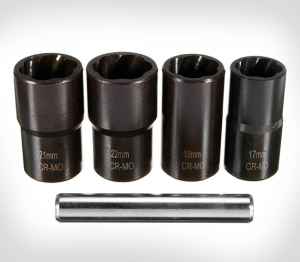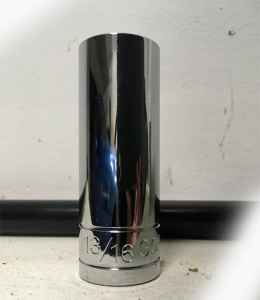What size socket for lug nuts do you need for your Jeep? The size of the socket is determined by the size of your bolt. There are a lot of different sizes and styles, but they all fall into one of three categories: metric (mm), standard SAE, or fractional inch system. You’ll also see two numbers on each size – one before or after the slash “/”. This number indicates how many millimeters wide the nut will be in that size space. For example, 12/24 would mean this size can fit up to 24 mm-wide bolts.”
Types of Sockets

Metric sockets size bolts in millimeters. Standard SAE sockets size bolts in fractions of inches, and fractional inch systems size bolts in fractions of decimal inches (eights). The socket sizes are determined by the bolt size you’re working with. For metric-sized nuts, the number before or after the slash “/” is how many millimeters wide it can fit up to – for example, 12/24 would mean this size can fit up to 24 mm-wide bolts. In standard SAE sizing, the two numbers represent a range: both have some overlap so they’ll work on similar sized nuts; one will be slightly smaller than the other but may still provide enough contact surface area to grip your nut securely.
A 17mm socket will fit most Jeep lug nuts.
Tips and tricks on how to use a socket set
Always use the size socket that’s close to or matches your bolt size. It should be a tight fit, but not so lose it slips off. The jeep lug nut size of the socket is determined by the size of your bolt.
- Don’t use a torque wrench as your only way to determine the size socket you need for Jeep lug nuts. You’ll have to know what size bolt you’re working with, which size it needs to be tightened down and how much pressure is required.
- They can come in handy when tightening bolts that are difficult or nearly impossible to reach (make sure the size of the bike’s wheel nut matches up), but they should not replace other methods such as using pliers on stubborn screws
If your goal is safety, then don’t rely solely on them. Always go by feel too – if something doesn’t seem right, stop immediately. If any tool feels like it could slip off a bolt while under tension, put a cloth or some other material under the head of the wrench to provide a cushion.
Safety tips for working with tools
Always wear the appropriate safety gear for what you’re doing. Eye protection is a must when working with power tools.
It’s essential to use size bolts that are as long or longer than your tool; this will help ensure stability, and allow enough surface contact area of the wrench handle to grip securely. Never use pliers on size nuts: they’ll round off over time, leading to stripped threads that can’t be repaired. And always tighten by hand first – then repeat the process using size torque wrenches.

 Always use the size socket that’s close to or matches your bolt size. It should be a tight fit, but not so lose it slips off. The jeep lug nut size of the socket is determined by the size of your bolt.
Always use the size socket that’s close to or matches your bolt size. It should be a tight fit, but not so lose it slips off. The jeep lug nut size of the socket is determined by the size of your bolt.
Add Comment